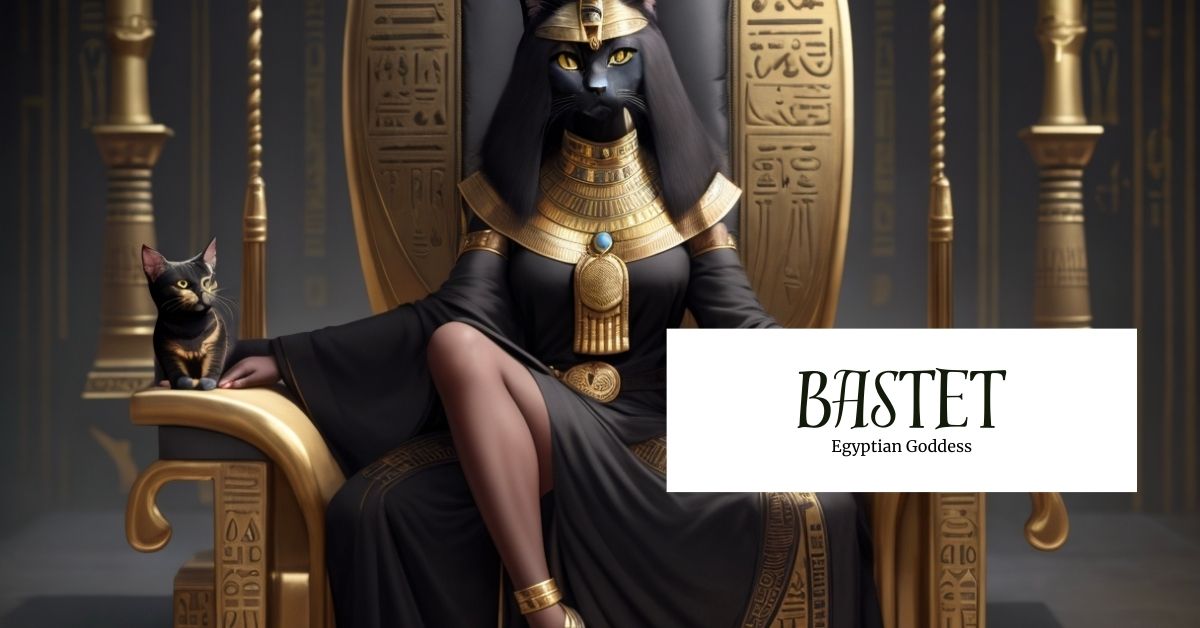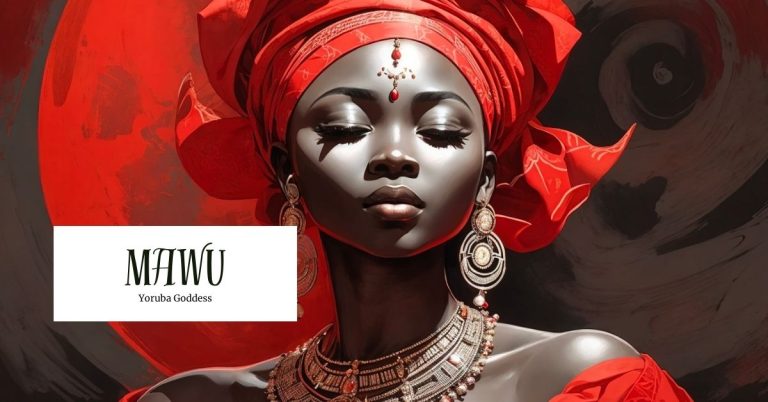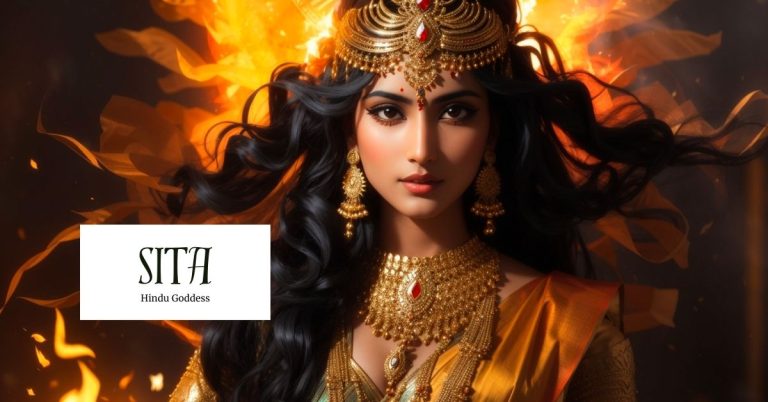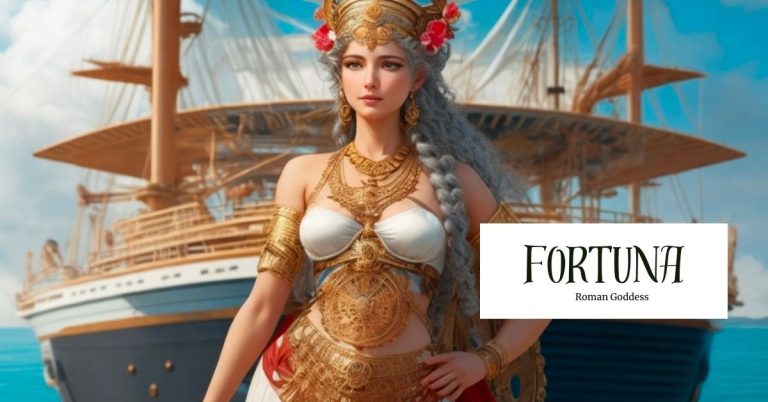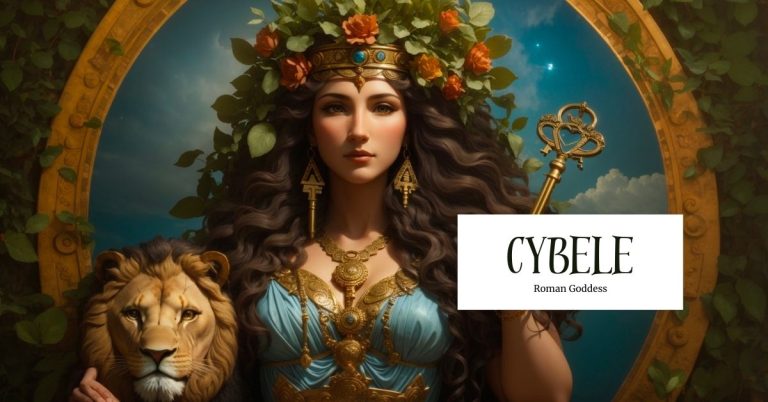Bastet: The Feline Goddess
Transformed from a powerful lion to a gentle cat, Bastet is an Egyptian goddess known for her feline presence and cult following. Bastet’s gentle nature associated her with fertility and home life, specifically protecting the lives of women and children. This goddess’ story tells us more about Egyptian history and its connection to the cat—from goddess to lovable pets. Bastet is attached to myths and icons such as a cunning serpent, the color turquoise, the most elaborate festival in ancient Egyptian history, and of course the presence of Bastet’s cult that stretched throughout Europe. Bastet symbolizes the sacred bond between human and animals. Although her prime was during ancient Egyptian times, her legacy still remains today.
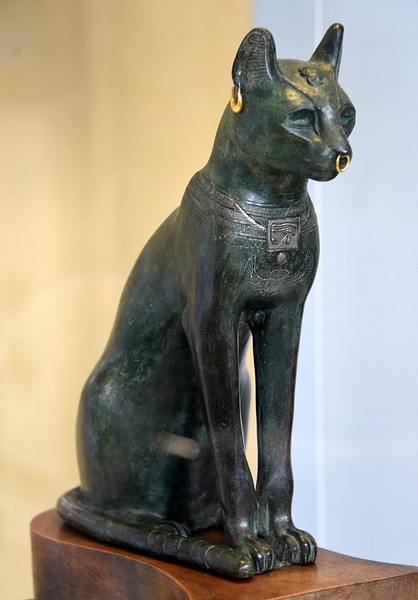
Source: World History
Overview of Bastet
Originally worshiped in the form of a lioness, and then later a cat, Bastet is the goddess of fertility, cats, home, festivity, joy, dance, childbirth and domesticity. Bastet is the daughter of the sun god Ra. She is native to Bubastis in the Nile River delta, in Lower Egypt. She was one of the most important and highly worshiped ancient Egyptian deities. Her transformation to a gentle cat was enticing and a prime recognizable symbol of ancient Egyptian myth and culture.
Titles
The origin and true meaning of Bastet is a bit of a mystery. The meaning of Bastet is unknown and a point of scholarly debate. Her name was originally B’sst which became Ubaste, then Bast, then Bastet. Geraldine Pinch, a writer and Egyptologist, claims that “her name probably means She of the Ointment Jar” as she was associated with protection. Her hieroglyphics translate to ointment jar. She was sometimes linked with perfume and sweet smells, which plays into the translation of her name.
Abilities
Bastet’s abilities are associated with protection—protection from disease, protection in the afterlife and protection of cats. Bastet was able to ward off diseases, specifically those targeting women and children, and save lives. She guided spirits through the afterlife and protected the dead. Protector is her main ability and what she is best known for, making her a sacred goddess.
Cats also became sacred in Egypt, partly due to Bastet’s success. They believed cats were the physical incarnation of Bastet. Cats were seen as divine because they worshiped the sun and the moon equally—bathing in both sunlight and moonlight. These cats also hunted and killed vermin that would tarnish the crops that humans would plant, making Egyptians incredibly grateful to the cats. The goddess protected that sacred relationship between the animal world and the human one. In one story of invasion in Egyptian history, the Egyptians were too scared to fight for fear of hurting the animals and offending Bastet, so they decided to surrender. Her power and respect was that important.
Characteristics
Black cats are said to be a descendant of the goddess Bastet, so Bastet was in the form of a black cat. She typically wears an elaborate ornamented dress. In a statue at The Met, Bastet is wearing a dress with an intricate striped pattern. The vertical pattern of these strips could represent the striped fur of a cat.
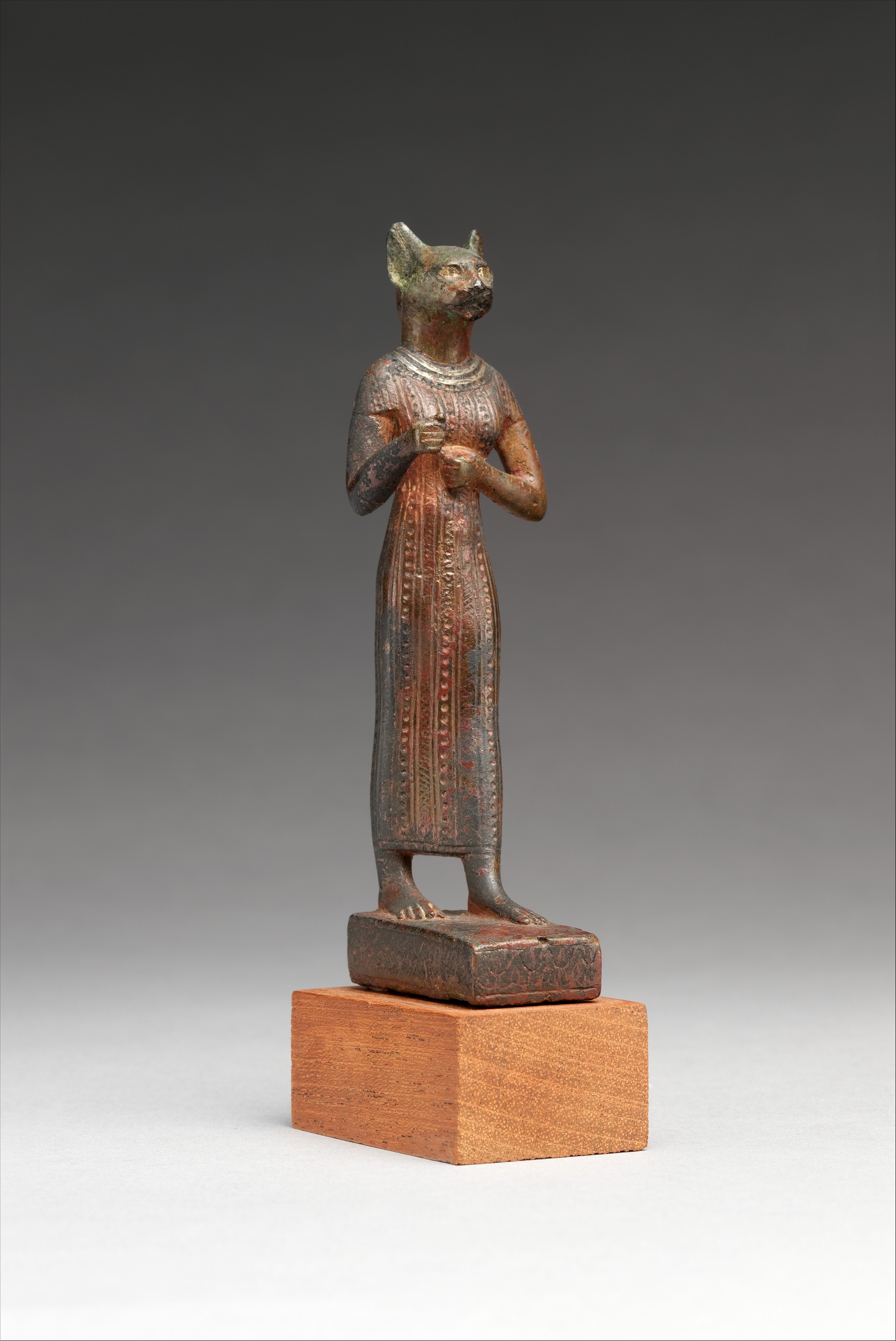
Source: The Met Museum
Traits
Bastet was represented as a cat, referring to her gentle nature. The goddess is associated with childbirth, motherhood and domesticity, meaning she has a nurturing and compassionate trait that differs from other goddesses such as Sekhmet, her opposite. The double nature of Bastet had been documented in earlier ancient Egyptian textual sources. The “Loyalist teaching” of the 12th dynasty describes the ideal characteristics of a king as: “He is Bastet who protects the two lands. He who worships him will be protected by his arm. He is Sekhmet against he who transgresses his order. The one he hates will be under distress.”
Symbols
Bastet carries a sistrum, an ancient percussion instrument. The sistrum is a U-shaped metal instrument made of bronze or brass with crossbars stretched across. When the sistrum is shaken, it creates a jangling noise from the clank of metals. Bastet is often seen with this musical instrument to associate her festivity and dance. The sistrum can also represent the link to Hathor, another Egyptian goddess who transformed from a violent destroyer to a gentler and milder version.

Source: Wikipedia
Festivals and Rituals
Heavily associated with Bastet is a cult. The Bastet cult was from Memphis, a city and the capital of ancient Egypt. The cult was carried to Italy by the Romans. Traces have been found in Rome, Ostia, Nemi and Pompeii. The earliest knowledge of Bastet at Bubastis dates back to the reign of Pepi I of the 6th dynasty (around 2270 BCE). The center where Bastet was worshiped is heavily destroyed with no real recognizable images, but that center was one of the most rich and most luxurious cities. People from all over came to worship Bastet and would even bring dead cats to the center. There are tombs nearby with images that allude to Bastet having the most elaborate festival in Egypt. The festival included feasts, music, dancing and wine. During the festival, sacred rattles were used. Tomb stelas, a stone or wooden slab, from the cemetery of Bubastis preserved the titles of Bastet temple administrators, so it can be assumed that a temple and cult of the Bastet existed there by the end of the Old Kingdom. One tradition was the “raising of the skirts” by the women to showcase their genitals as a message of freedom of social constraint and Bastet’s association with fertility and childbirth.
Legends associated with Bastet
Bastet has a mysterious origin story that is not concrete. There are multiple versions that all seem plausible, but all align with the theme of changing from a head-strong and violent lioness, to a gentle and nurturing cat.
Origin story
One story says that Bastet was sent to Nubia by her father Ra. Nubia was a special place in Egyptian mythology by the Nile River. Ra sent Bastet there when she was a lioness to rage in isolation. Bastet then returned as a cat. Some believe Bastet’s trip to Nubia was meant to symbolize the period of unapproachability in the cycle of menstruation. This theory was based on scenes that were found in hieroglyphic paintings at Thebes. Another version of Bastet’s creation was through Sekhmet’s origin story. Sekhmet is another Egyptian deity who is often associated with Bastet. Sekhmet began her rampage on the human population after her father, Ra’s, request, but was taking it too far. The fields ran with human blood and Ra needed Sekhmet to stop because he himself was not a cruel deity. Sekhmet ignored Ra’s orders to stop, so Ra poured beer and pomegranate juice, which looked like blood, in Sekhmet’s path. She drank the mixture believing it was blood and became so intoxicated she slept for three days straight. When she awoke from her drunken state, Sekhmet awoke as a Bastet, a gentler and sweeter version of Sekhmet.
Slaying of Apep
Ra’s greatest enemy was a serpent named Apep, sometimes named Apophis, who was associated with chaos and darkness. Apep’s goal was to destroy Ra and cover everything in darkness. While Apep only operated in darkness, Ra could only really operate in light, so it was impossible for him to stop Apep and his plan. Bastet in her feline form had excellent night vision, making her the one to stop Apep. Bastet was able to slay Apep one night and protect her father. Apep’s death resulted in the sun continuing to shine and the crops continuing to grow.
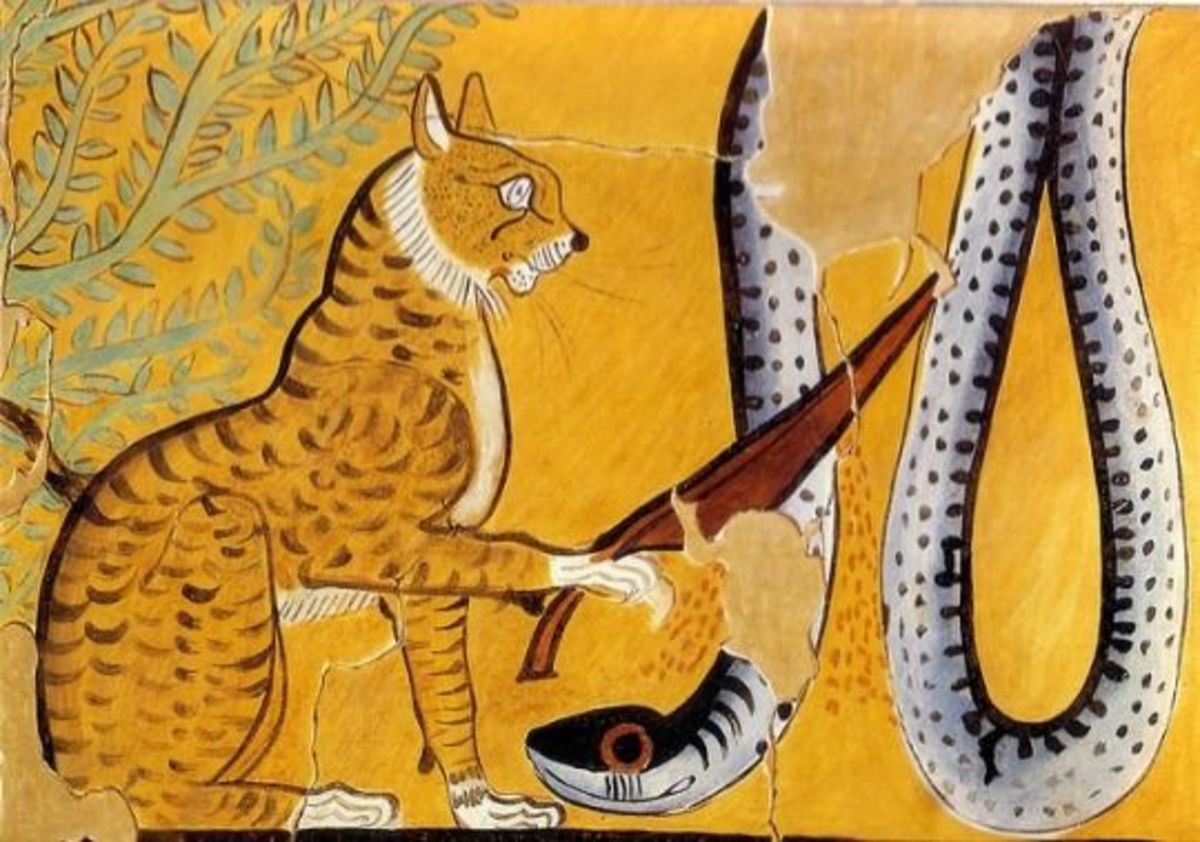
Source: Exemplore
The Creator of Turquoise
It was said that when Bastet blood touched the ground, it turned to a turquoise color. Because of this, it was considered that Bastet was the creator of the color turquoise. Bastet’s blood is believed to be menstrual blood, associating the color of turquoise to all women.
Influences of other religions/cultures on Bastet
Bastet’s transformation from a lioness to a cat could reflect the subtle changes in religious beliefs in ancient Egyptian history. In the ancient Pyramid Texts, Bastet seemed to take the role of the king’s nursemaid and protector as he grew. Bastet was also seen as a protector of the dead and guide in the afterlife, establishing a role in the religious belief in the afterlife. Bastet was an extremely important part of Egyptian history and continued to be popular in the Roman Empire, until her importance vanished during the rise of Christianity, like many other Egyptian gods and goddesses.
Modern appearances
The English fiction writer Neil Gaiman referenced the goddess in several of his works, including American Gods and comic series The Sandman. Paul Gallico, an American novelist, wrote a 1957 novel Thomasina, the Cat Who Thought She Was God with Bastet as its main character. The book was later adapted into the 1963 Disney film The Three Lives of Thomasina. Bastet has appeared in a number of video games as well. She was featured in the MOBA Smite as a playable character, and again in Overwatch and Age of Mythology and Age of Empires: Mythology.
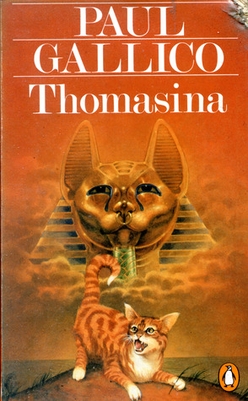
Source: Wikipedia
Many pieces of art of Bastet have been recovered and featured in museums throughout the world. The Metropolitan Museum of Art has a bronze and metal statue of Bastet from Florence Blumenthal. The Brooklyn Museum also has a standing statue of Bastet with the sistrum.
Final Thoughts
The Egyptian goddess Bastet had an incredible influence on the lives of the ancient Egyptians. Her ability as a protector and her gentle nature made her one of the most worshiped ancient deities. Bastet’s form as a cat created the relationship between humans and their pets, signifying cats as a divine animal. Her success is seen in the cult created just for her, spanning all around Europe. Bastet remains one of the most popular and studied Egyptian goddess to this day, and for good reason.
Sources
Encyclopædia Britannica, inc. (n.d.). “Bastet,” Encyclopædia Britannica, https://www.britannica.com/topic/Bastet
Maup van de Kerkhof, “Bastet: Ancient Egypt’s Most Important Cat Goddess”, History Cooperative, November 16, 2022, https://historycooperative.org/bastet/.
Meehan, Evan. “Bastet.” <em>Mythopedia</em>, November 29, 2022. <a href=”https://mythopedia.com/topics/bastet“>https://mythopedia.com/topics/bastet“>https://mythopedia.com/topics/bastet</a>.
“Bastet: About.” LibGuides at The Westport Library, (n.d.), https://westportlibrary.libguides.com/bastet
Würzburg, E. L.-A. “The goddess bastet and the cult of feline deities in the Nile Delta,” ARCE, February 11, 2023. https://arce.org/resource/goddess-bastet-and-cult-feline-deities-nile-delta/
Mark, J. J. “Bastet,” World History Encyclopedia, October 9, 2022. https://www.worldhistory.org/Bastet/

